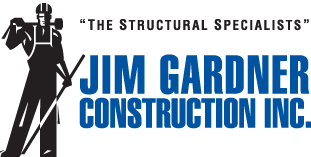Dear Jim: I need your help. My basement flooded with 6 inches of water this year after it has been dry for the 30 years we have lived here. I’m assuming multiple atmospheric rivers got this started. We had an old sump pump in place and had plumbers come and install 2 more during this recent series of storms, but they don’t help at all. What should I do?
The sump pump can be a lifesaver in the correct application. Unfortunately, it is not an effective tool for most of the drainage problems we experience in the Bay Area, which are accelerating with climate change and are demanding a more comprehensive approach.
What a Sump Pump is good for.
A sump pump is primarily useful for removing localized surface water inside your home in the location it is placed, or at the exterior as part of a drainage system to pump water to the street. If you have water on the floor in a furnace room the sump pump will remove the bulk of the standing water. If you have a crawlspace or basement where water is being channeled to a specific location the sump pump may help. A sump pump will generally only remove underground water in relationship to its depth- i.e. a sump well which is 2’ deep will normally remove water that gets within 2 feet of it.
Why Sump Pumps are generally ineffective
Unfortunately, our clay soils do not allow water to flow very well laterally. Translated this means the water that is migrating under our foundations will not be able to find the sump pump unless it is directed there. Subterranean water is frequently traveling under our foundations and popping up downstream in our crawlspaces or basements at various locations, and these locations can change as soils expand and contract in relationship to wet and dry conditions and vary with storms coming from different directions. A sump pump may seem like it is working because it sits in a hole below the water table causing it to fill up with water, but that may not be the water you need to get rid of.


What is the Answer?
The answer is to install a proper drainage system, sometimes expensive, never fun, always time consuming, but very effective (if done correctly). A well-designed combination of French Drains and downspout drainage will protect the perimeter of your home and never allow water to get to those locations that are getting flooded, channeling water away from your house. The analogy is we are putting a moat around your home to protect it. Water does not belong under your house and can lead to settlement, foundation damage and structural issues that can lead to costly repairs. Now may be the time to consider how to best protect what is likely your most valuable financial investment.
Conversations with Your Local Contractor is a feature by Jim Gardner of Jim Gardner Construction Inc. (with articles finessed by Lisa Gardner). If you have residential, homeowner questions OR ideas for an article you’d like Jim to highlight, please send an email to jim@jimgardnerconstruction.com.
Jim is a long-time Piedmont resident and has been doing structural repair and basement renovation in your neighborhood since 1983. To schedule an estimate or for more information please go to our website at jimgardnerconstruction.com.



